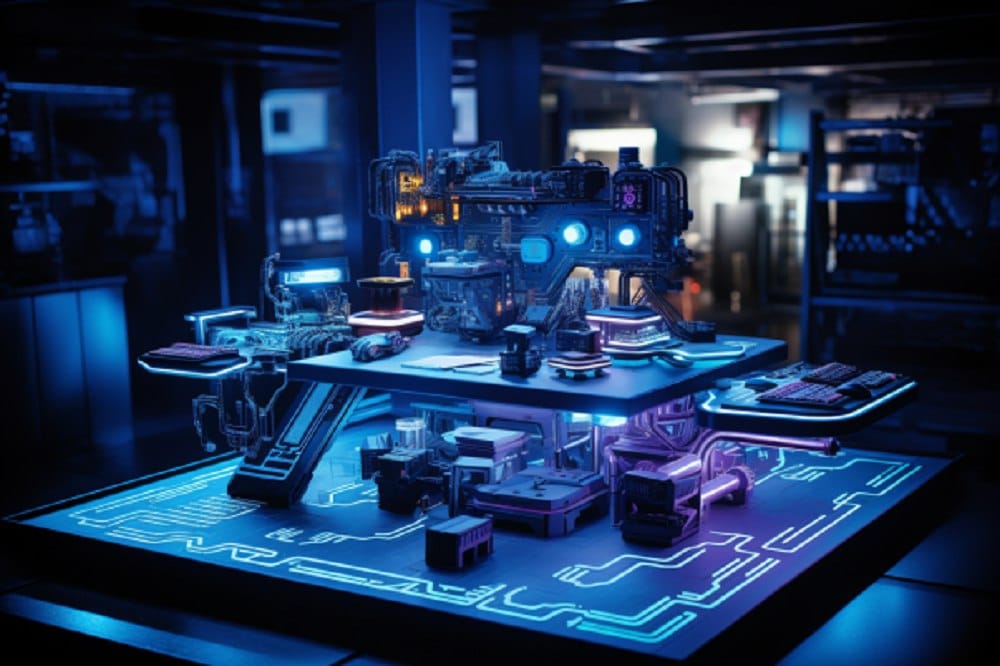Cryptocurrency mining is a potentially lucrative venture, but it’s impossible without a mining rig’s creation. This guide provides the complete mining process, including selecting components, optimizing your rig for maximum efficiency, and ensuring you can start earning cryptocurrency rewards.
Building A Mining Rig
Before building a mining rig, it’s vital to understand that running a rig could be more expensive than the mined cryptocurrency’s value without access to cost-effective electricity. Accordingly, a high-quality power supply unit (PSU) and an uninterruptible power supply (UPSU) are necessary for optimal operation.
Furthermore, specialized parts are needed to build a rig tailored to a specific cryptocurrency’s algorithm. Hence, there is a need to have the right motherboards, GPUs, PSUs, riser cards, and other components.
Moreover, the configuration of your rig depends on the type of crypto you plan to mine. For example, a Bitcoin mining rig requires a powerful motherboard to support multiple graphics cards.
Therefore, understanding these specifics is crucial in constructing an efficient rig.
Components Of A Mining Rig
The essential components for assembling a mining rig include a motherboard, an 8GB DDR4 RAM module, a dedicated mining rig frame, a compatible CPU, a 250 GB SSD for storage, a robust Power Supply Unit (PSU) to ensure stable operation, a Graphics Processing Unit (GPU) or Application-Specific Integrated Circuit (ASIC). However, any change in the specifics of these components depends on the targeted cryptocurrency.
Each of these elements plays a crucial role in the overall performance and functionality of the mining rig, with careful selection and integration being paramount for a successful mining operation. Apart from essential hardware, you’ll need specialized mining software (e.g., CGMiner, EasyMiner), an optimal operating system (e.g., Awesome Miner, Hive OS), a secure cryptocurrency wallet, a stable internet connection, and a 5GB minimum capacity flash drive for seamless mining rig operation.
Considerations For Competitive Cryptocurrency Mining
Exploring competitive cryptocurrency mining, particularly with sought-after currencies like Bitcoin, demands a keen understanding of the upfront costs involved. These expenses can be substantial, ranging from specialized hardware to the energy required to power the rig.
It’s a terrain that necessitates careful financial planning and a detailed assessment of the potential returns. However, cloud mining is viable for those new to the mining arena or those seeking a more cost-effective alternative.
This alternative sidesteps the need for hefty investments in physical hardware, offering an entry point into mining with relative ease. One popular platform facilitating cloud mining is ECOS.
By leveraging this platform, miners can immediately commence their mining operations, unburdened by the upfront capital outlay typically associated with conventional mining rigs. However, it’s imperative to note that cloud mining has its considerations.
While it alleviates the need for physical hardware, it entails different operational costs and revenue-sharing models. Hence, miners opting for cloud-based solutions should conduct thorough due diligence on their chosen provider, ensuring transparency, reliability, and favorable terms.
Step-By-Step Building Guide
Follow these step-by-step instructions when constructing your mining rig:
Place the motherboard on a surface free from static electricity. Then, install the CPU according to the manufacturer’s guidelines, noting the recommended GPU layout for the chosen motherboard.
Attach the Processor to the motherboard and handle the CPU carefully. Align it correctly and secure it in the socket. Apply the thermal paste, attach the heat sink and fan, and connect the fan’s cable to the motherboard.
Firmly insert the RAM into the memory slot, ensuring it clicks securely.
Attach the motherboard to the rig frame and secure the motherboard to the lower deck of the mining frame. Be cautious to avoid conductive surfaces.
Attaching the Power Supply Unit (PSU), position the PSU near the motherboard. Connect the appropriate power cables.
Attach the PCIe USB Riser and Graphic Card. Install PCIe risers to elevate the GPU above the motherboard to help improve cooling. Connect the risers to available PCIe slots and attach the GPU.
Install the SSD, mount the storage device, and connect it to the motherboard using a SATA 3 data cable. Ensure it receives power from the PSU. These detailed steps will result in a functional and efficient mining rig setup.
Is Crypto Mining Still Profitable In 2023?
While the potential for profitability in cryptocurrency mining still exists, factors such as market fluctuations and rising operational costs have impacted the overall profitability of mining ventures. Pursuing free or cheaper Bitcoin through mining may not yield the same returns compared to previous years.
Furthermore, the initial investment, which includes the cost of hardware, electricity, and additional components, requires careful consideration. Additionally, miners must remain vigilant in monitoring the crypto market to adapt to changing conditions.
For many individuals, especially those new to mining, joining a mining pool may be more viable and cost-effective. Mining pools allow participants to combine their computational resources, increasing their chances of receiving rewards.
Even though the rewards are distributed among pool members, this collaborative approach can provide more consistent returns. Prospective miners should conduct thorough research and financial analysis before starting a mining venture.
Understanding the costs, risks, and potential rewards is essential for making informed decisions in this dynamic industry.
